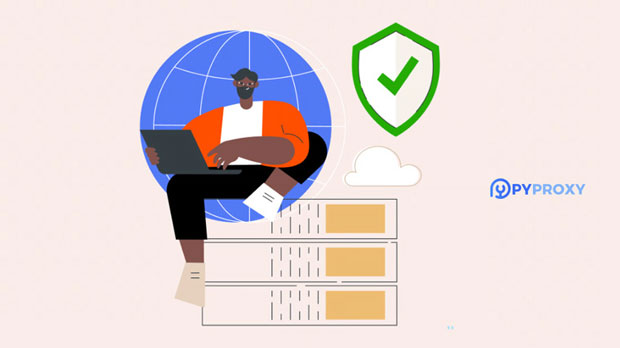How to Purchase SOCKS5 Proxy Server and Ensure Optimal Performance?
When it comes to browsing the internet securely and anonymously, using a socks5 proxy server is one of the best solutions. socks5 proxies provide greater flexibility, speed, and anonymity compared to other types of proxies. However, purchasing the right socks5 proxy server and ensuring its optimal performance can be a daunting task if you're not familiar with the process. In this article, we will guide you through the steps of purchasing a SOCKS5 proxy server, factors to consider for optimal performance, and tips to get the best value for your investment. Whether you're looking to protect your privacy, access geo-blocked content, or improve your browsing speed, understanding how to select the right SOCKS5 proxy is essential. 1. Understanding SOCKS5 Proxy ServersBefore delving into how to buy a SOCKS5 proxy and maximize its performance, it’s important to understand what SOCKS5 proxies are and how they work.SOCKS5 (Socket Secure version 5) is a protocol that routes internet traffic through a proxy server, masking your real IP address. This offers anonymity and security for online activities, including web browsing, file sharing, gaming, and accessing content that may be geographically restricted. Unlike other proxy protocols, SOCKS5 doesn’t modify or filter traffic based on its type, which means it can handle a wider variety of internet traffic, including HTTP, FTP, and P2P protocols.In comparison with its predecessors, SOCKS5 offers better performance, faster speeds, and more robust security features. However, to maximize its benefits, it's crucial to choose the right provider and configure the server for optimal performance.2. Choosing the Right SOCKS5 Proxy ProviderThe first step in ensuring a reliable and high-performance SOCKS5 proxy server is selecting a reputable provider. Here are some key factors to consider:2.1. Server LocationThe physical location of the SOCKS5 server plays a significant role in its performance. If you are targeting specific regions or countries for bypassing geo-restrictions, choose a provider with servers in those locations. Additionally, the closer the proxy server is to your real location, the faster the connection speed will generally be, as the distance that data needs to travel is reduced.2.2. Server Speed and ReliabilityOne of the most important factors for performance is the speed and reliability of the server. Look for a SOCKS5 proxy provider that offers high-speed connections with low latency. Read user reviews and look for performance benchmarks to ensure that the provider’s proxies are fast and stable. Some providers offer trials or money-back guarantees, allowing you to test the service before committing fully.2.3. Security FeaturesEnsure that the SOCKS5 proxy provider offers robust security measures to protect your privacy. This should include strong encryption protocols, DNS leak protection, and support for authentication (username and password) to prevent unauthorized access. Additionally, the provider should have a strict no-logs policy to ensure that your browsing history and data are not stored or shared.2.4. Customer SupportGood customer support can make a significant difference when issues arise. Look for a provider that offers responsive 24/7 customer support through multiple channels, such as email, live chat, and phone support. This ensures that you can quickly resolve any performance or connectivity issues that may come up.3. How to Purchase a SOCKS5 Proxy ServerOnce you’ve chosen a SOCKS5 proxy provider, the next step is the actual purchase. The process is typically straightforward, but here are some tips to ensure you get the best deal:3.1. Choose the Right PlanSOCKS5 proxy providers usually offer a variety of pricing plans based on the number of proxies, bandwidth limits, and duration of service. If you are a light user, a shared SOCKS5 proxy plan might be sufficient. However, if you require a higher level of performance, consider opting for dedicated proxies, which offer better speeds and more privacy.3.2. Payment MethodsMost providers accept various payment methods, including credit cards, PayPal, and cryptocurrencies. If privacy is a top concern, using cryptocurrency for payment can be a good option, as it provides an additional layer of anonymity.3.3. Configuration and SetupOnce you’ve completed your purchase, you’ll receive the necessary credentials and configuration details to set up your SOCKS5 proxy. The configuration process can vary depending on the provider, but generally, it involves entering the proxy server address, port number, and authentication details into your browser or software application. Many providers offer detailed setup guides to help you through the process.4. Ensuring Optimal Performance of Your SOCKS5 ProxyAfter purchasing your SOCKS5 proxy, it’s essential to take steps to optimize its performance. Here are some tips:4.1. Test the Connection SpeedOnce you’ve configured your SOCKS5 proxy, it’s important to test its connection speed to ensure that it meets your expectations. Use online speed testing tools to check the download and upload speeds, as well as latency. If the speeds are not up to par, try switching to a different proxy server or contact customer support for assistance.4.2. Avoid Overloading the Proxy ServerIf you're using a shared SOCKS5 proxy, keep in mind that too many users on the same server can lead to congestion and slower speeds. To avoid this, try to limit the number of simultaneous connections and ensure that the server you’re using isn’t overcrowded. Dedicated proxies can help mitigate this issue by offering exclusive access to resources.4.3. Monitor Proxy Performance RegularlyIt’s important to regularly monitor the performance of your SOCKS5 proxy to ensure it continues to function at an optimal level. This includes checking for any slowdowns, connection drops, or performance inconsistencies. Many proxy services offer dashboard tools that allow you to monitor the usage and performance of your proxy in real-time.4.4. Avoid Using Free SOCKS5 ProxiesWhile free SOCKS5 proxies may seem appealing, they often come with serious downsides, including slower speeds, unreliable connections, and even potential security risks. For the best performance and security, it’s always better to invest in a premium SOCKS5 proxy service.5. Troubleshooting Common SOCKS5 Proxy IssuesEven with the best proxy server, issues may arise from time to time. Here are some common problems and how to address them:5.1. Proxy Not WorkingIf your SOCKS5 proxy isn’t working, double-check the configuration details, including the server address, port number, and authentication credentials. Ensure that the proxy server is operational and not facing downtime. If the issue persists, reach out to customer support for assistance.5.2. Slow Internet SpeedsSlow speeds may occur due to network congestion, poor server location, or server overload. Try switching to a different server, choosing a closer server location, or reducing the number of active connections. Additionally, ensure your local internet connection is stable.5.3. Connection DropsFrequent disconnections can be caused by network instability or incorrect proxy settings. Make sure your internet connection is stable and check if your firewall or antivirus software is blocking the proxy connection. If the issue continues, contact your provider’s support team.ConclusionPurchasing and using a SOCKS5 proxy server can provide enhanced anonymity, faster speeds, and greater flexibility for a range of online activities. However, to ensure optimal performance, it’s essential to select a reputable provider, choose the appropriate plan, and follow best practices for configuration and maintenance. By carefully considering factors like server location, speed, security features, and customer support, you can enjoy a seamless and efficient browsing experience with your SOCKS5 proxy. Always monitor the performance and stay proactive in addressing any issues that arise to maximize the long-term benefits of your investment.
2025-01-06

























































